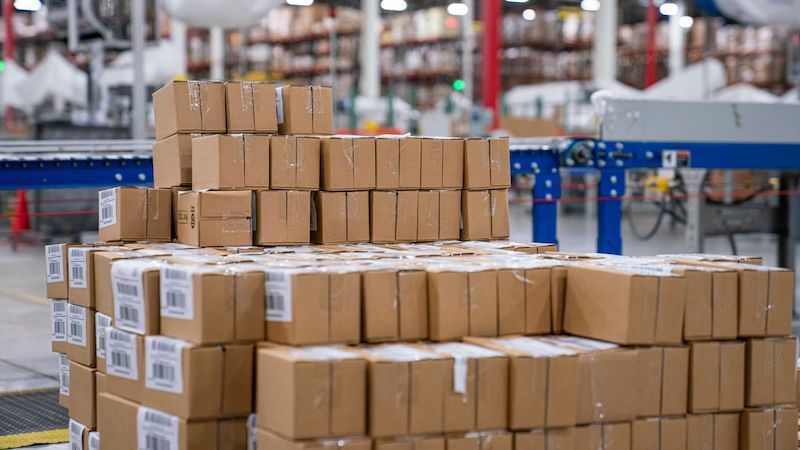Grow your business with the Discover newsletter
Logistics advice & insights straight to your inbox
Subscribe now
The concept of a circular economy is a new way of thinking about how we produce and consume goods and services. It stands in contrast to the traditional linear economy, which is based on a take-make-dispose model of resource consumption. To fully grasp the meaning of a circular economy, it is important to understand the three core principles that drive it:
Design out waste and pollution: The circular economy focuses on creating a closed-loop production system where materials are recovered, recycled, and reused to minimise pollution.
Keep products and materials in use: The circular economy extends the life of products and materials, consequently reducing the need to extract new resources and generate less waste.
Regenerate natural systems: The circular economy aims to replenish natural systems, such as soil, water, and biodiversity, by regenerating them through sustainable practices.
When the above principles are adopted into business practices, a circular economy model can bring a number of benefits to companies of all sizes, including:
Cost savings: By designing products and systems to be reused, repaired, refurbished, or recycled, businesses can reduce the need to extract and process new resources, which can lower costs.
Resource efficiency: Keeping products and materials in use for longer can reduce businesses’ reliance on finite resources and cut down on waste.
Reduced environmental impact: By incorporating regenerative practices, businesses can reduce their environmental impact and become more sustainable.
If you are keen to employ circular economy practices in your business, here are some examples of how to get started:
One of the most direct ways that businesses can adopt circular economy practices is by providing recyclable or compostable packaging options for their products. This can not only help to reduce waste and mitigate the effects of climate change caused by single-use plastics, but also promote the use of more sustainable alternatives. You may, for example, replace non-biodegradable materials with recyclable packaging such as ones made from paper, bamboo, or cornstarch.
Furthermore, you could also consider offering reusable packaging options such as refillable containers or durable bags, which can be used multiple times before being recycled.

Beyond recyclable packaging, making the transition to a circular economy model could involve more drastic changes. This can include implementing energy-efficient practices, switching to renewable energy sources, and investing in more sustainable transportation options – ultimately reducing carbon emissions across all aspects of your operations. These steps can help your business achieve reduced emissions while still maintaining the same level of productivity as before.
Additionally, you can further demonstrate your commitment to circular economy and sustainability through carbon offsetting initiatives. This entails investing in projects that help in reducing or removing carbon from the atmosphere. Some of the projects available for companies include the restoration of forests, oil recycling, landfill gas capture and other activities that will ultimately neutralise carbon emissions.
By contributing to carbon offsetting programmes, your business can inspire trust among potential customers and provide them with peace of mind when making purchasing decisions. More than just a financial benefit, participating in carbon offsetting projects can also allow your business to reduce its carbon footprint in many other ways and contribute to an overarching move towards sustainability in the long run.
You can also encourage your customers to make more sustainable consumption choices by embracing the reverse supply chain. This means offering take-back programmes for products at the end of their lifecycle or providing repair and refurbishment services for products that are still in good condition. For example, a technology company could establish a programme for customers to trade in their old devices for credit towards new ones, which would then be refurbished and resold.
Finally, you can partner with suppliers who are certified for sustainable practices. This can help ensure that the products and materials used by your business are sourced in an environmentally-friendly and socially-responsible manner. Some certifications include the Forest Stewardship Council (FSC) certification, which promotes responsible management of forests, and the Global Organic Textile Standard (GOTS), which ensures organic fibres have been sustainably sourced.
Additionally, you can also create sustainable procurement policies, which outline specific guidelines for how materials used should be sourced ethically and responsibly. By working closely with your suppliers, you can continuously strive to improve your approach towards the circular economy while keeping up with industry best practices in sustainability.
By implementing one or more of these circular economy practices, your business can take an important step towards becoming more sustainable, efficient, and competitive. At the forefront of international express delivery, DHL Express is also equally committed to environmental sustainability.
To achieve zero emissions by 2050, we have a number of initiatives, such as GoGreen Plus, that aim to reduce carbon produced through air freight carriers by switching to sustainable aviation fuel (SAF). Meanwhile, our Sustainable Marine Fuel initiative works towards reducing the use of heavy fuel oil and switching to sustainable marine biofuel. There are also plans for electric vehicles; the goal is for at least 60% of last-mile delivery vehicles to be electric by 2030.
With this in mind, if you have yet to use DHL Express, consider opening a business account today and learn how you can embrace a circular economy model in your business operations effectively.